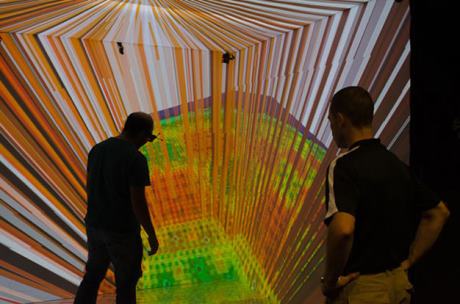Supercomputer team wins award for core work
07 July 2014
A team from Westinghouse and the Consortium for Advanced Simulation of Light-Water Reactors (CASL) has been recognised for its work on simulation of conditions in nuclear reactor cores using Titan, the USA's most powerful supercomputer.
 |
| CASL has previously used the Titan supercomputer to model the neutron flux inside the core of TVA's existing Watts Bar 1 pressurized water reactor (Image: Tom Evans, ORNL) |
The annual International Data Corporation (IDC) HPC Innovation Awards recognize the achievements of users of high-performance computing (HPC) technologies, focusing on success stories involving HPC in science and industry. The Westinghouse-CASL project was among seven award winners announced at the International Supercomputing Conference in Germany on 26 June. Awards were also given to projects using HPC in fields including protein structure prediction, plasma behaviour modelling, hydroelectric turbine engineering, aerospace and automotive industry applications.
The Westinghouse-CASL team received the award for core physics simulations of Westinghouse's AP1000 reactor using CASL's Virtual Environment for Reactor Applications (VERA) to produce 3D, high-fidelity power distributions representing the conditions expected during startup. Using up to 240,000 computational units in parallel, the results included as many as 1 trillion particle histories per simulation to reduce statistical errors. The study's findings will help to improve understanding of core conditions, helping to ensure a safe reactor startup.
Titan, housed at the US Department of Energy's (DoE) Oak Ridge National Laboratory (ORNL), uses a Cray XK7 system and was installed in 2012. The AP1000 simulation studies used the Exnihilo code suite developed by ORNL, including the Denovo application which takes advantage of Titan's NVIDIA graphics processing accelerators and a new stochastic transport module, Shift, which has been developed with the support of CASL's radiation transport methods team.
CASL radiation transport methods deputy leader Tom Evans described real-world significance of the application of DOE technology for industry users. "This isn't a hypothetical problem we're simulating. This is a real case that needed to be solved," he explained. Westinghouse is currently building eight AP1000s in China and the USA, with the first one expected to start up later this year.
CASL was set up in 2010 to provide advanced modelling and simulation solutions for commercial nuclear reactors and is led by ORNL. Westinghouse is one of CASL's ten core partners.
Researched and written
by World Nuclear News